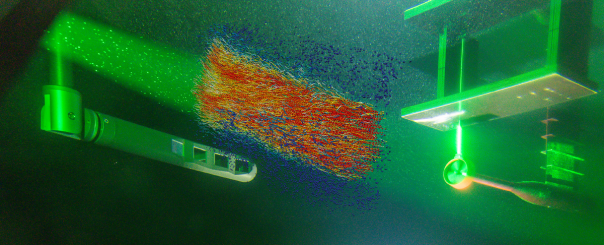Interesting comparison of stereoscopic particle image velocimetry and volumetric particle tracking velocimetry applied in the wake of a ducted propellers
Montag, 28. Juni 2021
The interaction of ship and waterways is of high importance in inland navigation.
Particle Image Velocimetry method was used to get validation data for CFD simulations. 2D3C PIV measures three velocity components simultaneously within a thin light sheet, resolving the flow in a 2D plane. However, for many applications and deeper understanding of transient 3D flows, it is desirable to measure in a complete volume. Previous 3D particle tracking velocimetry systems suffered from low resolution and difficulty with higher density tracer particles.
The novel LaVision Underwater MiniShaker system used in these measurements to study wake behind ducted propellers attempts to overcome these drawbacks with a Shake-the-Box tracking algorithm and a new hardware design for simple and reliable calibration. The MiniShaker system comprises 4 cameras in a compact and rigid housing, and works in combination with LED or laser illumination. The system quickly generates a large amount of data, calibration in the water basin is very easy and the results were in very good accordance with 2D3C PIV data.
The measurements were performed in the facilities at the Institute of Marine Technology, Ocean Engineering & Transport Systems (ISMT) of the University of Duisburg-Essen and the shallow water basin of the Development Center for Ship Technology and Transport Systems (DST).
Click here for the full article.


